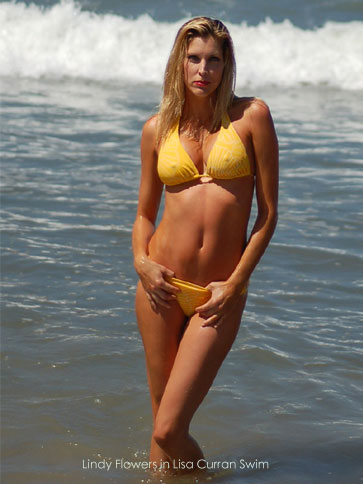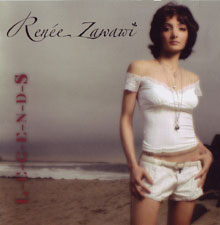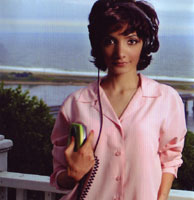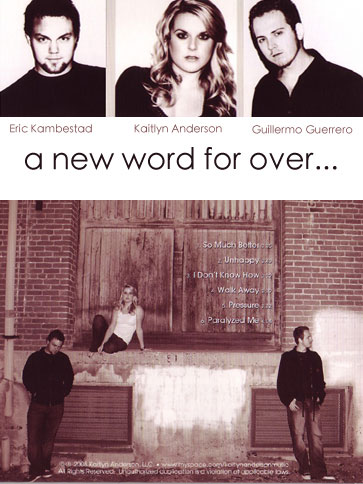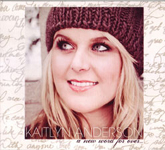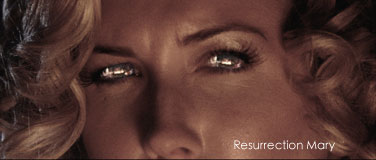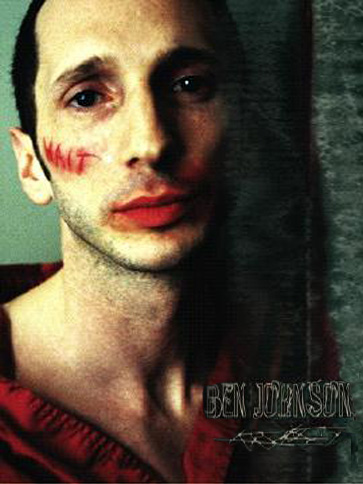|
Lisa Curran Swim – Designing Versatile Swimsuits
Lisa, your swimsuits are fun and very figure flattering. How did you come up with such a variety of swimsuit styles? When I am designing, I always have a particular person in mind. Who is she? Is she in college? Is she a young mommy? Is she into fashion or more conservative? Then I What inspires your designs? Whatever I am feeling at the moment. At the moment, I am really into retro mod. What types of fabrics do you use for your cover-ups? What makes a practical cover-up? I use light cottons or a lighter version of my swimsuit material. I use something that will dry quickly. What is your design background (i.e. education)? I have a degree from FIT and University of Delaware. How long have you been designing? Eleven years. You’ve had a lot of success, you’ve graced several magazines, and you are among the favorite of a lot of celebrities. How do you continue to reinvent yourself so well with each new collection? It actually gets more difficult the more successful you become. But thank God I love what I do, so it comes pretty easy to me. How would you define your spring/summer swimsuit collection?
Do you have a favorite piece in your collection? I have a few favorites. I love the patent and the navy Lucite. What other types of garments do you design? I am starting to get into summer dresses. What are your price points? $160-$210. What would you say sets you apart from other designers? My fit. What obstacles if any did you encounter when starting your line? I encountered many obstacles. Money, production, working 24/7. It wasn’t easy, but I made it through it. I believed in my product, so I was determined. What was your highest high as a designer? My first Sports Illustrated swimsuit party, and going to the Golden Globes and meeting so many celebrities. Lisa Curran Swim is located in retail stores, and you can purchase her suits directly from her website www.lisacurranswim.com. Interviewed by Kaylene Peoples See the fashion editorial. Lisa Curran Swim is also featured in this issue’s “Summer 2008 Issue” video segment. |
Category: Indie Hotspot
Independent Music, Film, Art, Etc.
Renée Zawawi’s L-E-G-E-N-D-S – How One Recording Artist Openly Shares Her Life in Her Music
|
Renée Zawawi’s L-E-G-E-N-D-S – How One Recording Artist Openly Shares Her Life in Her Music
When the first track “American Girrrl” came on, I immediately wanted to move. The beat is stirring and Renée Zawawi’s voice has a wispy, childlike quality, which is a nice contrast to the heavy dance groove. “‘American Girrrl’ is about being accepted in
The second track “The Wind Was Her Only Music” is a very visual track. The music is not the standard major chords that you hear in Western society. This song has a far-away quality, and the hook of this song is haunting and addicting. The Latin guitar tastefully adds to the track. Renée has a well-trained voice, exercising so much control, and she impresses me with her natural quarter toned vibrato. This song is about Renée’s experiences as a little girl, where she was dragged away from home by her abductors, and longed to see her family. Track 7 “Never Knew” starts out sexy with a Spanish feel, it alternates between mid-tempo and upbeat and is peppered with castanets once again showing Renée Zawawi’s uniqueness and her deliberate attempt at change. Renée pulls it off well. Every track inL-E-G-E-N-D-S encompasses Renée’s diversity. “I sang to release my soul and relieve the heartache of what I was going through.” Prevalent in L-E-G-E-N-D-S, Renée experiments with different and unique sounds. The beats are infectious and very synonymous with clubs and DJs. Renée’s voice is soothing and smooth—very reminiscent of Astrud Gilberto, in that she can hold a This album is unique, well-produced, creative, haunting, sexy . . . the adjectives are limitless. Renée has delivered a beautiful piece of eclectic work. I give this CD 4.5 stars. To keep updated on Renée Zawawi and L-E-G-E-N-D-S go towww.reneezawawi.com. Reviewed by Sean McKenzie |
Kaitlyn Anderson’s EP, A New Word For Over Climbs the Indie Pop/Rock Charts
|
Kaitlyn Anderson’s EP, A New Word For Over Climbs the Indie Pop/Rock Charts
“I take an idea, like pressure and think of ways I feel pressure in life. Running out of time for me was a big one. So I drew a clock and an hour glass symbolizing time… that turned into grains of sand and ticking clocks like I was on the clock and running out of time.” – Kaitlyn Anderson A New Word for Over is an easy blend of rock and pop. The first track is titled “So Much Better.” It has a catchy hook an upbeat groove, and Kaitlyn lives up to her songwriting. “I’m ever so much better without you.” She achieves the vibe that after a Kaitlyn Anderson moves me with her vocals, and most of the time she is spot on. I don’t really hear her influences (Bette Midler) in her voice, but that could be seen as a good thing. She has managed to cultivate her own style. The production on her EP is very professional and the sonic quality could fool anyone into thinking this was anything but an Indie project. Over all, I give this 3.5 stars out of 5 stars. Kudos to you, Kaitlyn and your team for a polished EP. The Personnel: Kaitlyn Anderson – Lead Vocals, Backgrounds, Writer and Co-Writer on all songs Eric Kambestad – Drum and Drum Arrangements Guillermo Guerrero – Guitars, Backgrounds, Musical Arrangements Visit www.myspace.com/kaitlynandersonmusic to learn more about Kaitlyn Anderson. Reviewed by Sean McKenzie |
Resurrection Mary’s Pamela Jean – A Young Leading Lady with a Promising Career
Resurrection Mary‘s Pamela Jean – A Young Leading Lady with a Promising Career
“What makes the story of Resurrection Mary so compelling to folklorists and other historians is the sheer number of documented credible eyewitness sightings of this very mysterious ghost, spanning decades.”
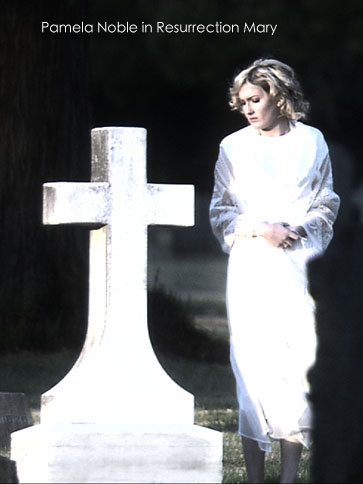 Resurrection Mary, directed by Sean Michael Beyer, is a film about a legendary ghost story about a high school student back in the 1930s. Pamela Jean (aka Pamela Noble), who plays opposite Kevin G. Schmidt, plays the character Mary. At just 18 years old, she made her on-screen debut in the movie’s title role. She has appeared in the short film Social Theory Revised, and has appeared in numerous music videos and commercials. Pamela’s role in this feature film certainly dictates that she has a promising career as a leading lady.
Resurrection Mary, directed by Sean Michael Beyer, is a film about a legendary ghost story about a high school student back in the 1930s. Pamela Jean (aka Pamela Noble), who plays opposite Kevin G. Schmidt, plays the character Mary. At just 18 years old, she made her on-screen debut in the movie’s title role. She has appeared in the short film Social Theory Revised, and has appeared in numerous music videos and commercials. Pamela’s role in this feature film certainly dictates that she has a promising career as a leading lady.
“Resurrection Mary manages to tell a story of ghosts and murder without falling into slasher movie clichés. Peppered with strong performances, Indie audiences who favor character development over gore will enjoy Resurrection Mary.“
—Michael Gavine, LAsThePlace.com—
So, Pamela, this is your first feature film. What is your background as an actress?
I started acting when I was five in television, did some modeling and commercials. When I was eight, I was with an agency and they ripped us off for $8,000.00. So I quit until I was about 13 and decided I wanted to get back into it. I started doing more singing than acting, and then at 14 that’s when I made the switch to doing what I wanted to do, acting. Singing is a lot harder industry to break into than acting. There’s a lot more competition. I do country music and they don’t want me because there are too many young blonde country artists out there right now.
That’s a really interesting statement you make. I’ve never heard that before, for someone to say that it’s harder to break into music than it is to break into acting.
I’ve been told that so many times that no country label is going to take me because there are too many blondes out there. I am not going to dye my hair. I went out on my first audition at eight, and all I did until I graduated from high school was do commercials and music videos.
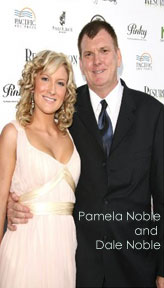 Your father, Dale Noble, is the Producer? What was it like working with your father on this film?
Your father, Dale Noble, is the Producer? What was it like working with your father on this film?
It was fun. I live out in Fontana, so I’m kind of far away. It was nice to have him around. If I ever needed to talk to somebody, he was right there. I had fun with it. I thought it was a great way to do my first film.
Being that he was the executive producer─and you said it was good to have him there with you─did it also help you with developing character for how you were going to perform in the movie, too?
Not really. When it came to film, I made my own decisions. To my dad and my agent, I always said I want to be in control of my acting career. I wanted to make the big decisions. For instance, when I was younger, I never wanted to be on a soap opera. I never wanted to be on Nickelodeon or a Disney show. There are a couple of actors that come out and they’re big, but some of them don’t do the kind of movies that I personally would be proud of. I want my career to be very broad. That’s one thing my dad knows off the bat. Anything I do in acting, I am going to make the decisions.
[Pertaining to Resurrection Mary], for example, my character Mary, was physically and verbally abused by her boyfriend, and he drank a lot. In the movie, you’ll see if anybody’s drinking around me, I was scared. And I would always fidget with my locket.
Those are always good signs of those films that have character development.
Yeah if you don’t have those, your character isn’t fully developed. Even though my character wasn’t assigned a last name, I gave her one. I gave her a birthday. You have to actually do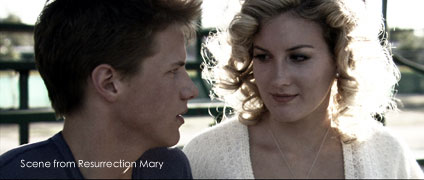 those things so you feel like you are her. For example, Mary is very prim and proper and I am a tomboy. [Someone even commented on how different I was from the character in the movie once they met me.]
those things so you feel like you are her. For example, Mary is very prim and proper and I am a tomboy. [Someone even commented on how different I was from the character in the movie once they met me.]
That makes your characters more 3-dimensional. IsResurrection Mary an Indie film?
Our film’s budget is higher than most Indie films, so they’re calling it something else. It was fully funded right from the beginning.
There are a lot of movies that are Indie films that were hugely funded. For example, Enemy at the Gate was an independent film. Right now there’s only Indie or studio films, but unfortunately sometimes when something’s labeled Indie, people automatically assume low budget. But obviously Resurrection Mary doesn’t really fit into that.
That’s what everyone thinks when they say Indie film. They think the budget is like $80,000.00, and everyone gets the wrong idea.
I guess they need to come up with a new label.
Pamela, where do you see yourself in five years?
My dad and I have talked about this. An up-and-coming director told me he wanted to do an action film with me, which is perfect for me. If I can be running around in shorts and be dirty and shooting guns, that’s perfect. Where do I sign up? He started writing one for me. We’re hoping that’s going to happen next. I’m hoping I can do a very dramatic love story. I always wanted to do a period piece. I always wanted to do some kind of musical because that’s where my passion is, too—it’s singing. I want my career to be very broad.
Being that you are a young actress who has made some very wise choices in your life already and in your career, which is probably going to play out very well in the future because of it, what advice would you give to someone who’s trying to also do the same thing you’re doing?
You have to work hard. Especially for the people in my film, I was basically the newcomer. Kevin Schmidt, who plays Jeff Pryce in the movie, has been in a lot of movies (The Butterfly Effect and Cheaper by the Dozen), and Kristen Herrera (Freedom Writers); and when you’re the lead role and one of the few people that no one really knows where you came from, you 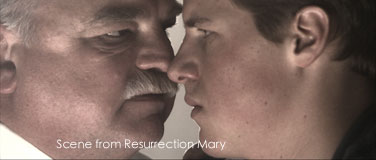 need to work twice as hard as anyone else. You need to show that you have a place to be in that movie. And that’s what I did. Every single day I was studying for this role, learning my lines. I had to learn a different way to talk. Especially in that kind of film, you have to be very articulate. You just have to work really hard and just be yourself. If you’re going to have the attitude that “I’m better than anyone else,” your career is not going to get far at all.
need to work twice as hard as anyone else. You need to show that you have a place to be in that movie. And that’s what I did. Every single day I was studying for this role, learning my lines. I had to learn a different way to talk. Especially in that kind of film, you have to be very articulate. You just have to work really hard and just be yourself. If you’re going to have the attitude that “I’m better than anyone else,” your career is not going to get far at all.
Is there anything else you’d like to add?
When people see the trailer to Resurrection Mary, they’re just going to think it’s a horror film, but it’s a lot more. At my premiere, people were coming up to me saying how they related to the character. People really need to come and see it, because it’s not just a horror film. It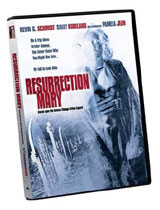 adds an element that is a lot different than the way most horror or thriller films are made.
adds an element that is a lot different than the way most horror or thriller films are made.
Resurrection Mary will be released on DVD August 26, 2008. To learn more about this film, visit www.resurrectionmarythemovie.com.
See the trailer of Resurrection Mary.
Interviewed by Kaylene Peoples
Dawn Westlake – Making Independent Filmmaking Look Easy
Dawn Westlake – Making Independent Filmmaking Look Easy
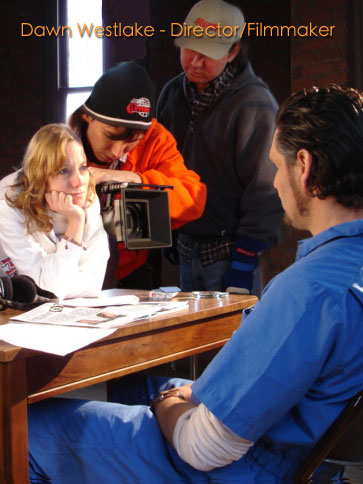 Dawn Westlake is a graduate from Northwestern University’s Radio-TV-Film program. She has been acting, writing, directing, and producing media and theater in Chicago, San Francisco, Los Angeles, Upstate NY, and Northern Portugal. She won the Mark of Excellence Award from the Society of Professional Journalists for a televised interview with former President Jimmy Carter in 1987 and NU’s prestigious Richter Scholarship for a thesis on TV3, Televisió de Catalunya in 1984. She was named a Platinum Filmmaker by Canon USA in 2002 and won an award for personal expression from JVC-Tokyo in 2005. Collectively, Dawn’s seven short films produced under her Ron de Caña Prods., Inc., banner have played on all seven continents and have won 38 international awards. She was named one of the “Top 100” short filmmakers in the world by Cultural Mall in 2008. And if that weren’t enough, Dawn is also fluent in Spanish and proficient in Portuguese and Italian.
Dawn Westlake is a graduate from Northwestern University’s Radio-TV-Film program. She has been acting, writing, directing, and producing media and theater in Chicago, San Francisco, Los Angeles, Upstate NY, and Northern Portugal. She won the Mark of Excellence Award from the Society of Professional Journalists for a televised interview with former President Jimmy Carter in 1987 and NU’s prestigious Richter Scholarship for a thesis on TV3, Televisió de Catalunya in 1984. She was named a Platinum Filmmaker by Canon USA in 2002 and won an award for personal expression from JVC-Tokyo in 2005. Collectively, Dawn’s seven short films produced under her Ron de Caña Prods., Inc., banner have played on all seven continents and have won 38 international awards. She was named one of the “Top 100” short filmmakers in the world by Cultural Mall in 2008. And if that weren’t enough, Dawn is also fluent in Spanish and proficient in Portuguese and Italian.
How did you get started in filmmaking?
As an actress I’ve been in SAG and AFTRA for about 20 years now and I basically got really frustrated from having no control. People treating you like, don’t let the door hit you in the bottom on the way out. That got old. So I started writing stuff and I thought a producer would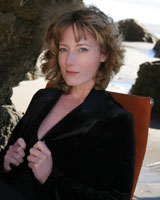 come along, and of course they never did. So then I started producing for myself. After a while, directing. I did my first film (Mini Driver Project) in Portugal.
come along, and of course they never did. So then I started producing for myself. After a while, directing. I did my first film (Mini Driver Project) in Portugal.
How is it that you were able to do your first film in Portugal?
I was trying to co-produce a feature film with Spain or some other Mediterranean country. I bought the rights to a very famous Spanish novel, and I was trying to get that done. I was knocking on doors and then knocking my head against the wall. And it wasn’t working out. So a friend of mine told me I needed to have a script and a tape of something I already produced, perhaps here in Portugal, and show that you can command a foreign crew. It didn’t make my co-production dreams come true.
How long does it take for you to write a screenplay?
I’m always writing in my head, so you could say it takes months and years, or if you want to talk about the time that I sit down, not that long—just a couple of days. When I feel like I’m 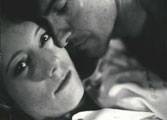 ready to shoot, I go to my crew, the Moser brothers. They do a lot of visual effects work, animation for really big shows and studios. When they have free time, that’s when we do my low budget stuff. They always tell me this is the stuff that has meaning. So they like being involved.
ready to shoot, I go to my crew, the Moser brothers. They do a lot of visual effects work, animation for really big shows and studios. When they have free time, that’s when we do my low budget stuff. They always tell me this is the stuff that has meaning. So they like being involved.
Are all of your films shorts?
Yes, they’re all shorts. The shortest one is eight minutes. That’s “The Life of Death” and the longest one is “God’s Good Pleasure.” That’s about 18-1⁄2 minutes.
What has been one of your biggest challenges when shooting your films?
Portugal was challenge because I was so far away from home in a different culture, but I’ve really been fortunate. I haven’t really had any big obstacles. I always work with people that I know I can trust. Also I rarely have ever cast. And what I mean by that is, I write for people I already know. In fact the first time I ever cast is for the most recent film. I cast “The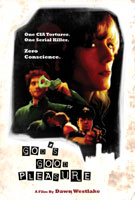 Grandpa.” I didn’t know anybody of that race in that age group. I couldn’t believe I didn’t know any 60 plus black actors. I put out an ad, and I found this wonderful gentleman, Warren Watkins, took him to lunch, and I didn’t even have him read lines. He was the part.
Grandpa.” I didn’t know anybody of that race in that age group. I couldn’t believe I didn’t know any 60 plus black actors. I put out an ad, and I found this wonderful gentleman, Warren Watkins, took him to lunch, and I didn’t even have him read lines. He was the part.
You seem to have an instinct.
I think I do have an instinct. Creepy sometimes. When I don’t follow my gut, that’s when I usually have problems.
You’re also an actress. Do you act in all of your movies?
Not all of them, but most of them.
What’s your background?
I was always acting as a kid. Then I thought that was not a very serious pursuit, so I went to Northwestern to be a broadcast journalist. And when I got out of school they were laying people off. It was the time of Laurence Tisch at CBS and the big strike at NBC, and there were no jobs. I hit rock bottom and I had always been this overachiever and here I was applying myself, pounding the pavement. People didn’t even want me to script bust or get 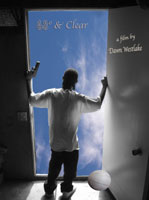 coffee. My then boyfriend, now husband was in my room at my parents’ house and saw all my trophies. He said, “I didn’t know you were an athlete.” I told him the trophies were for acting. He then said, “Why don’t you do that?” I told him it wasn’t a serious career, but he said a lot of people take it really seriously and they do well. So I went back to school and started studying at Second City in Chicago. I did some international commercials and industrials, then moved to San Francisco, did more work, and then came here.
coffee. My then boyfriend, now husband was in my room at my parents’ house and saw all my trophies. He said, “I didn’t know you were an athlete.” I told him the trophies were for acting. He then said, “Why don’t you do that?” I told him it wasn’t a serious career, but he said a lot of people take it really seriously and they do well. So I went back to school and started studying at Second City in Chicago. I did some international commercials and industrials, then moved to San Francisco, did more work, and then came here.
Was it hard finding an agent?
In Chicago not so much, because you can be multi-listed. You could have as many as 12 agents. So it can be exhausting making the rounds. You have a lot of people looking out for you. San Francisco I signed right away. Here . . . yeah, it was very difficult. I also ran into people whose ethics weren’t square with mine. That’s another reason I catapulted into setting my own schedule and taking charge.
As an actress, do you find it helps you with your directing skills?
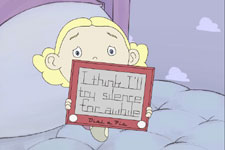 Oh, definitely. You try to put yourself in their position and try to encourage them to use things from life. Or if you see in their eyes that that might be too painful, you tell them about something in your own life.
Oh, definitely. You try to put yourself in their position and try to encourage them to use things from life. Or if you see in their eyes that that might be too painful, you tell them about something in your own life.
I like the fact that you don’t cast. I think you’re getting more authentic performances.
Absolutely! My father wrote and narrated the piece “The Life of Death.” And he’s probably one of my favorite actors. And he’s actually a material scientist. No acting bug ever hit him.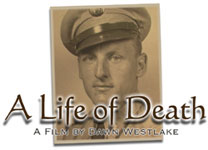 My editors said it was the easiest edit ever. He made his choices and he hit his mark the same every time. It was great working with my dad.
My editors said it was the easiest edit ever. He made his choices and he hit his mark the same every time. It was great working with my dad.
Highest High:
When I finish something and have it in the box with the packaging. That’s the greatest feeling. As far as festivals or awards . . . one thing that was pretty glamorous, I was invited to Taipei in 2004. I was up for what the Taiwanese consider their Oscar, called “Golden Horse.” I was flown there and put up in the Hyatt. One of the guys I competed with ended up winning our Oscar for Best Animated Short. A guy named Steven Hoban, the maker of “Ryan.” [I felt like I arrived.] But I love every festival I’m in. I’m starting to judge festivals now.
What medium do you shoot on, film or digital?
I call myself a filmmaker, but we always shoot mini DV. I’ve used the Canon XL, the Sony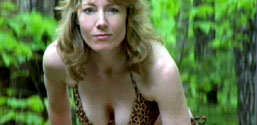 PD150, and the Panasonic DVX 100A. I used to edit on Premiere, but now I edit on Final Cut Pro.
PD150, and the Panasonic DVX 100A. I used to edit on Premiere, but now I edit on Final Cut Pro.
Do you edit your own films?
I’ve not edited my own movies, but I have this hobby doing all these viral vids for revver.com and YouTube.com and those I edit myself.
Lowest Low:
The first film in Portugal. There was this scene that was a health club which we turned into a restaurant that we had to shoot three [separate] times. I ended up making the film, but it took three times. It was either a sound problem or a lighting problem, or all-the-actors-were-fast-asleep problem because it was 4:00 in the morning. I had to beg the manager of the health club three times to let us shoot the scene over.
As an actress, how do you wear both hats?
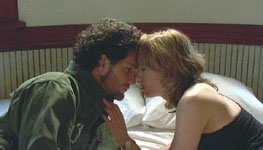 I have to tip my hat to the Moser brothers and their directing talents. I have a definite way that I want the film to look. I have a definite vision and that all gets explained beforehand. We have a lot of meetings and sometimes storyboards. So when it’s my turn to get in front of the camera, they’re really [good]. It’s all in the preparation. The more you prepare the more relaxed you can be when it’s time to act.
I have to tip my hat to the Moser brothers and their directing talents. I have a definite way that I want the film to look. I have a definite vision and that all gets explained beforehand. We have a lot of meetings and sometimes storyboards. So when it’s my turn to get in front of the camera, they’re really [good]. It’s all in the preparation. The more you prepare the more relaxed you can be when it’s time to act.
What advice would you give to an aspiring filmmaker?
Just do it. First of all, I don’t think I’m someone who really can give advice because I just think we all make our own paths and do our own things. You might be related to Spielberg, and that’s going to help you . . . . Don’t steal. Be ethical so you can sleep at night. And do get a good sleep at night so you’re not crabby at people. Otherwise, I don’t have advice other than just do it. There’s nothing stopping you.
To learn more about Dawn Westlake, visit her websites atwww.Filmbaby.com/films/2412, www.Rondecana.com, andwww.Dawnwestlake.com.
Interviewed by Kaylene Peoples
Watch the (video) interview with Dawn where she talks about her short films in detail.
Gina Villalobos – Country Rock Has a New Queen
Gina Villalobos – Country Rock Has a New Queen
Gina Villalobos has performed on countless stages throughout the world. Her songs appear simple, but don’t let that fool you. There are far-reaching meanings hidden behind her lyrics. Her voice borders on tough, yet tender, at times. And after a few listens, you can’t help but read between the lines. As a live performer, she is a treat—there is a polished difference between her actual recordings, but that is all. I appreciate a good raw live performance, and I appreciate a well engineered recording. Gina delivers both with her arsenal of CDs: Miles Away, Rock ‘n’ Roll Pony, Beg From Me, etc..
Gina garners a growing cult following in both the UK and the US for her grass-roots rock-influenced songs. And her privileged audiences enjoy a transcending experience when given the gift of seeing her perform live. As quoted from Harp Magazine, “Villalobos has the restlessness of the most moving country music, but she combines it with a rock spirit that’s always forthright and never forced….” — Jason Gross. And from Americana UK, “This is country rock at its most melodic, subtle and heart broken…a perfect summer driving record.” — David Cowling.
Gina Villalobos is a breath of fresh air when it comes to entertaining an audience and still remaining true to her music. I felt the intensity and passion this singer/songwriter/guitar player meticulously places in her music. I was not forced to feel when I listened to her perform. Instead, I became empathic. Her lyrics took me on a journey of truth throughout her very soul. Her lyrics are bold, seductive, sad, happy, and sarcastic at times. My neighbor, who is a huge fan of her music, introduced me to Gina’s music by inviting me to a performance one night. And she and her ensemble, consisting of a cellist, two guitar players, bass player, drummer, and slide guitarist, blew me away. Lucky for me, I had the pleasure of interviewing Gina before that mind-blowing set.
Gina, why don’t you tell me a little about yourself.
I’m a solo artist who usually performs with a band. Tonight I will be performing with a cellist, pedal steel player, drummer, bass player, and two guitarists, the second guitar played by me. The style—I blend rock, country, and pop (My songs are in the pop format). I get called Americana, and I get that I am the female Neil Young. I get compared to Ryan Adams and Lucinda Williams a lot.
What do you write about?
When I’m writing I’m emoting. I play my guitar, come up with a melody and some lyrics. I am writing about eight or ten songs that are works in progress, I don’t know what they’re really about until they’re finished. Usually when I look back, it’s personal stuff and experiences and feelings. I have two solo records out. I’m thirty-seven, and I’ve been doing this for seventeen years. There are probably about eight or nine CDs I‘ve done. I don’t even know.
Where can we find your music?
In the record stores across the nation. Online is always a good place, like iTUNES.
What inspired you to become a performer and a singer/songwriter?
It’s my mom’s fault. I grew up here in Southern California in the late 70s. It was a community full of artists, actors, songwriters, etc. So it was normal for me to be around that. I never really decided to do this. It was more of a self-realization of this is who I am.
Some musicians have struggled through a series of day jobs to finally come to the point of knowing this is what their life should be. Have you always been lucky enough to be at this point your whole adult life?
I’ve always done music. When I was twenty-one, I started doing music and touring bands. The first band was pretty successful. They’re not always that successful, so I did have to do a day job sometimes. But music has always been my main focus in my adult life.
Highest Moment
I think a high point for me would have been my first tour overseas. It was a big deal for me. I was in the UK. Another high point was two years later and I was still touring (Laughs). I couldn’t believe it!
Lowest Point
When I lost the vision in my right eye during the recording session of my first CD. It was an accident. I was doing a day job. My CD hadn’t been released. It was the CD that gave me that big international breakthrough. That was a hard time. But I can see out of my other eye, and it just really gives [me] an appreciation for life. But it was a very big low.
Is there any advice you’d like to give to an aspiring Indie musician?
The most important thing I think a writer and artist should have is just a real sense of doing their art for themselves and no one else, and just work at their own craft. When I write, if I think someone’s going to hear the song, I am really writing for somebody else. And the song sounds like crap. Just stay true and do it for yourself.
Email address: ponyvillalobos@aol.com. To learn more about Gina Villalobos visit her website at www.ginavillalobos.com.
Interviewed by Kaylene Peoples
Coalition of Independent Music (The Future of Music) – Is This the Answer for the Indie Artist?
Coalition of Independent Music (The Future of Music) – Is This the Answer for the Indie Artist?
Interview with Justin Jouvenal – Communications Director
 Most independent artists struggle with getting exposure like radio airplay, mass distrrbution, etc. And unless they are signed to a big label, rarely do the masses hear about them at all. Sure, with MySpace and CD Baby and the plethora of digital distributors like iTUNES, the playing field hasn’t capsized, and these musicians do have their small fan base. But will the playing field for Indie artists ever rival that of the signed artist on a major label? Will the Madonnas and Beyonces of the independent world ever reach the fame they so justly deserve?
Most independent artists struggle with getting exposure like radio airplay, mass distrrbution, etc. And unless they are signed to a big label, rarely do the masses hear about them at all. Sure, with MySpace and CD Baby and the plethora of digital distributors like iTUNES, the playing field hasn’t capsized, and these musicians do have their small fan base. But will the playing field for Indie artists ever rival that of the signed artist on a major label? Will the Madonnas and Beyonces of the independent world ever reach the fame they so justly deserve?
Annie De Franco and Prince are the only independents that come to mind. They are the rare few who have superceded the norm. De Franco burst onto the music scene and exemplified nonconformity; Prince used to be with a major label and is now an Indie artist. They both sell a lot of CDs and concert tickets—not the norm for the Indie artist. So, it was very refreshing to speak with a representative (Justin Jouvenal) from a foundation (The Future of Music) that is interested in helping those “underdogs” of music.
How did the Coalition of Independent Music / Future of Music get started?
The future of music was started seven years ago by Jenny Toomey (executive director), and Michael Bracy (policy director). Jenny Toomey ran a record label back in the 90s, called Cold Machine records, which was based in Washington, D.C. They produced many of the Indie rock bands in the area, and she came out of that experience, wanting to tackle issues that affected independent musicians and local artists. She got together with Michael Bracy and Kristin Thomson (deputy executive director). She also ran Cold Machine in 2000, and they decided to form the Future of Music Coalition to focus on music, technology, and policy issues, things catering to the interest of independent musicians. There wasn’t really a voice out there that represented independent musicians on policies and technology issues, so they sort of wanted to step up, and the Future of Music Coalition became that.
What year was this?
This was in 2000, when the group was actually formed.
They wanted to focus on some issues that the independent musician goes through? What are some of those issues?
Radio consolidation is a big issue for independent artists. For many years, independent artists have been virtually banned from the air waves. Unless you are a hugely successful band signed to a major label with a lot of financial backing, it’s really hard to get play on the air waves. So one of the major issues worked on was payola—one of the reasons that you don’t hear a lot of independent artist on the air.
Explain what “payola” is?
Record labels paying radio stations to play their music. We were instrumental… and the FCC investigation of Clear Channel, as well as a number of other big broadcasters over the last several years… This culminated in a settlement earlier this year. Clear Channel and the other broadcasters agreed to play more independent music and put in place some rules that would basically end payola.
Yes, that was a big deal.
Yeah, that was one of our major issues. You know, we also worked on getting to interact with [the radio stations]—that is one of our major campaigns right now. Other than that, it’s musicians and record labels coming together to support net neutrality.
I am not familiar with net neutrality.
What’s great is that the Internet is an open entryway. Anyone could just log on, and if you’re a small band, you could post your songs. If you’re a small record label, you could post your band’s albums. The big telecoms want to change the way the Internet is structured. They set up what we call a “fast lane” on the Internet, and they want to charge website concept providers to have their website downloaded faster. So if you are able to afford these fees, you will have a website that downloads fast. If you’re not able to afford these fees, then there is a fear that they’re going to be so high that independent musicians and independent labels and music download services like CD Baby won’t be able to afford the fees. These record labels and bands will be relegated to the slow lane on the Internet. The major labels and services like iTUNES would join faster speeds. This is a big fight that is going on right now. Supporters of net neutrality are really across the board for groups like moveon.org, and as far to the right as the Christian Coalition. There are a lot of groups that are really worried about that. So far, the campaign launched in May, and we’ve had 511 bands sign up, 143 record labels, and hundreds and hundreds of fans have agreed to be part of the coalition.
As part of the coalition, are there petitions, or are they just speaking out and boycotting?
Well, right now we do have a petition that people can sign. We’re pushing the FCC to enact rules making net neutrality the rule of the Internet. We’re also pushing Congress to enact Legislation. We have a website which is our main organizing tool: futureofmusic.org/rockthenet. This is where bands can sign up. One of the interesting features allows them to sign up for the campaign, and when they play a show, there is a map on the homepage where bands could list their shows. So if you look at it, there’s a picture of the United States and hundreds of push pins [in the map] where supporters of net neutrality are playing shows all across the country. Some of our founding supporters are REM, Pearl Jam, Death Cap for Cutie, Sarah Laughton, The Donnas, and the Kronos Quartet. We have artists that come from a wide spectrum and the music industry supporting our campaign.
I guess the desired effect is to just speak out to the point where it would stop whoever’s in charge. And who specifically is in charge of trying to do away with net neutrality anyway?
It’s the big telecom companies: Verizon. Comcast, etc. They’ve been talking about this for a long time, and they see a big payday there if they act as traffic cops. All they really do right now is deliver the Internet to your house. They are basically in charge of setting up all the pipes through which all the Internet content streams to various people. They realized that they could make a lot of money if they set themselves up as the traffic cops of the Internet. They would control how people access a website. They could charge websites and set up a toll booth that controls how people access websites; and by creating this whole move, they could charge websites for faster download speeds.
What’s so great about the Internet is that it is open, democratic, and anyone could log on, from the smallest blogger to the hugest media empire like FOX, and post their content and have anyone across the Internet access that content equally fast. That is the great principle of the Internet—one of the greatest democratic (creative) institutions going.
I see what some of your immediate goals are, like payola and Clear Channel, that is huge, and net neutrality needs to be preserved; but with indie musicians, do you think that at some point the playing field will ever be level?
That is our hope. That is the work that we engage in everyday. We had some great successes like the payola settlement, which we won. We feel like the music Industry plan towards the biggest players were chipping away at that. If we keep working at it, we could definitely welcome the playing fields for indie musicians, smaller artists, and local artists. I guess it is a question of time and effort before we make these changes. Basically, what I want to do is make the music industry more equitable for indie artists. We want them to be able to afford a middle class living. We want indie artists to pay a mortgage on a house, to be able to get health insurance. It’s putting in place the structures that will allow indie artists to survive … and arrive.
With the coalition do you have special advice or tips for indie artists, on how they could get their music played on the radio stations?
It is still in the early stages, but Clear Channel and several of the other major broadcasters have agreed to play 4200 hours of independent and local music. Right now, the broadcasters are in the process of setting up a process that would allow the artists to submit their music for airplay. Right now that process is just getting off the ground. Check back on a couple months or so.
How does the organization get their funding? Is it mostly through donations?
We get funding mostly through grants from the foundation. We get a small number of donations each year from individuals and musicians.
I am actually an indie musician, so for me, it’s of huge interest. This is great news, and I know you guys have been around for a few years, but I don’t think that the average indie musician really knows about it yet.
Yeah, well that is the struggle we have with our organization—just getting the word out is difficult.
Is there anything else you’d like to add?
One of the other major programs that we have right now is called HINT (Health Insurance Navigation Tool). We conducted a survey in 2001of hundreds of musicians and asked how many of them had health insurance?” Nearly half of the musicians we surveyed didn’t have any health insurance. So we built this program where musicians call in and set up an appointment to talk to musicians who are health insurance specialists and give them advice on how to get health insurance, and what kind of policy would be best for them. We don’t sell any kind of health insurance. It’s strictly funded through grants. We could help artists get to the point where they find health insurance; and it is a really tricky subject, and not many people really understand the ins and outs of it: futureofmusic.org/hint.
For more information about Future of Music, visit their website:www.futureofmusic.com.
Interviewed by Kaylene Peoples
Gina Villalobos’ Miles Away
Gina Villalobos’ Miles Away
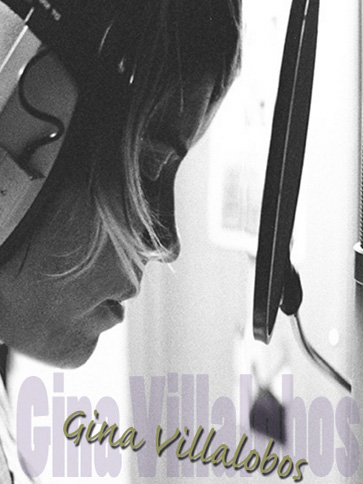 Slide guitars, consistent drum beats, raw emotions. These three elements encompass Miles Away, Gina Villalobos’ newest release. Gina has a knack for extracting her listener’s emotions with her lyrics in each one of the 10 tracks. Excellently recorded, Miles Away executes flawless performances from her personnel: Kevin Haaland (slide guitar), Ted Russell Kamp (bass), J’Anna Jacoby (violin), Ben Pringle (organ), and Joshua Grange (pedal steel). Villalobos’ vocal style is reminiscent of Kim Carnes, with a vocal and songwriting familiarity of that of Melissa Etheridge.
Slide guitars, consistent drum beats, raw emotions. These three elements encompass Miles Away, Gina Villalobos’ newest release. Gina has a knack for extracting her listener’s emotions with her lyrics in each one of the 10 tracks. Excellently recorded, Miles Away executes flawless performances from her personnel: Kevin Haaland (slide guitar), Ted Russell Kamp (bass), J’Anna Jacoby (violin), Ben Pringle (organ), and Joshua Grange (pedal steel). Villalobos’ vocal style is reminiscent of Kim Carnes, with a vocal and songwriting familiarity of that of Melissa Etheridge.
Miles Away is soulful country rock defined by the slide guitar, the light “twang” in Villalobos’ voice, and the strumming of acoustic guitar. However, some pop elements do stand out, evidenced by the catchy hooks and clever refrains. Gina does a unique version of Barry Gibb’s “If I Can’t Have You,” giving it a more country feel—very different from that of its original disco version sung by Yvonne Elliman.
The title track, “Miles Away,” is the perfect opening. The upbeat tune elicits optimism with its rock beat and major, predictable chord progressions, typically found in the genre. However, certain lyrics, like “One more time I’m falling off the sidelines,” “Buries me live,” or “I can’t hurt anymore,” indicate a true contrast from its happy delivery. Gina’s clever metaphors, like “heart on a kickstand,” create a masterpiece of hurt, vulnerability, and reflection. Other tracks, like “Somewhere to Lay down” and “Let’s Fall Apart,” deliver an openness and a clear yearning by this introspective songwriter.
Miles Away covers a wide range of emotions with melodies and arrangements that are simple but not sophomoric, an indicative quality of country rock. If it’s too complicated, we miss the meaning. This is where the complexity of the album shines through. It is clean, has effortless lyrics, as well as straight-ahead, no-nonsense music, coupled with loads of reflection, unconventional veracity, and tantamount talent, unrivaled by notable country rock artists. Once again, Gina Villalobos has proven she can hold her own!
To learn more about Gina Villalobos visit her website atwww.ginavillalobos.com.
CD reviewed by Kaylene Peoples
Allah Ali and Kosmic Flight
Allah Ali and Kosmic Flight
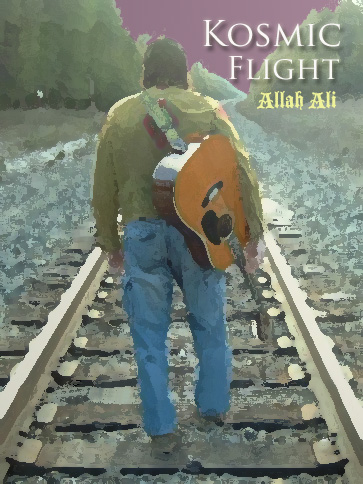 Allah Ali and Kosmic Flight was a pleasure to listen to. How nice to hear some damn good folk music and guitar. This man has a voice, similar in type to Elvis, but softer and with a strong vibrato that works well with his expert acoustic sound. He has captured the old style blues and folk. I really enjoy his song writing skills as well. He paints a picture with his words. While the EP has only three songs, all are done well, but “Sugar Baby” is definitely one you must listen to.
Allah Ali and Kosmic Flight was a pleasure to listen to. How nice to hear some damn good folk music and guitar. This man has a voice, similar in type to Elvis, but softer and with a strong vibrato that works well with his expert acoustic sound. He has captured the old style blues and folk. I really enjoy his song writing skills as well. He paints a picture with his words. While the EP has only three songs, all are done well, but “Sugar Baby” is definitely one you must listen to.
You will want to hear this man live. His vocals are haunting, and in my perspective, he is truly an artist—having worked on his craft for over 30 years. He started playing music when he was three years old. He has certainly grown.
Allah Ali not only tells the story with his words, but his vocals add to the portrait with his expert use of silence and space with his long sustained notes. He understands how to manipulate tempo and volume to capture the ear of his listener. He playfully adds a hint of a yodel to some of the songs and gives us a little blues guitar play as well.
Allah Ali has played his music all over the Western states, making his way to the East (Coast?). I recommend listening to Allah Ali.
To learn more, visit the following websites: www.indie911.com/allahaliand www.musicforte.com/member/aababa.
Lisa Trimarchi
Ben Johnson
Ben Johnson
Ben has a beautiful baritone voice that shines in several of the songs on this CD, and his working of the keyboards is expertly done. The songwriting itself is excellent. You will want to hear the second track, “Higher Than Rock.” It incorporates pop flavor with a rock edge. And again, he’s done great work on the piano—quite a surprise from the second track. The third track, “Let It All Come Down on Me” sounds like something out of a Broadway rock opera. The vocals grab me, and the music reminds me of a sci-fi sound track. I found myself singing along to the fourth track, “Not Enough,” and was convinced that I’d like to own this one—and wouldn’t mind hearing it again! The chorus: “You’re not naked enough to share my spotlight, Johnson says, “Sometimes I feel like nobody’s listening to me until I sing a song. Inside the song I can freely speak my mind, work out the puzzle, ask for help or give it, break down or stand up.” Ben’s voice is very distinct, and I appreciate his songwriting skills. You will want to listen to his debut CD again and again, as will I. Ben’s CD is available at cdbaby.com and can be downloaded at iTunes. Visit the following websites for more information: benjohnson@steeldog.org Lisa Trimarchi |
